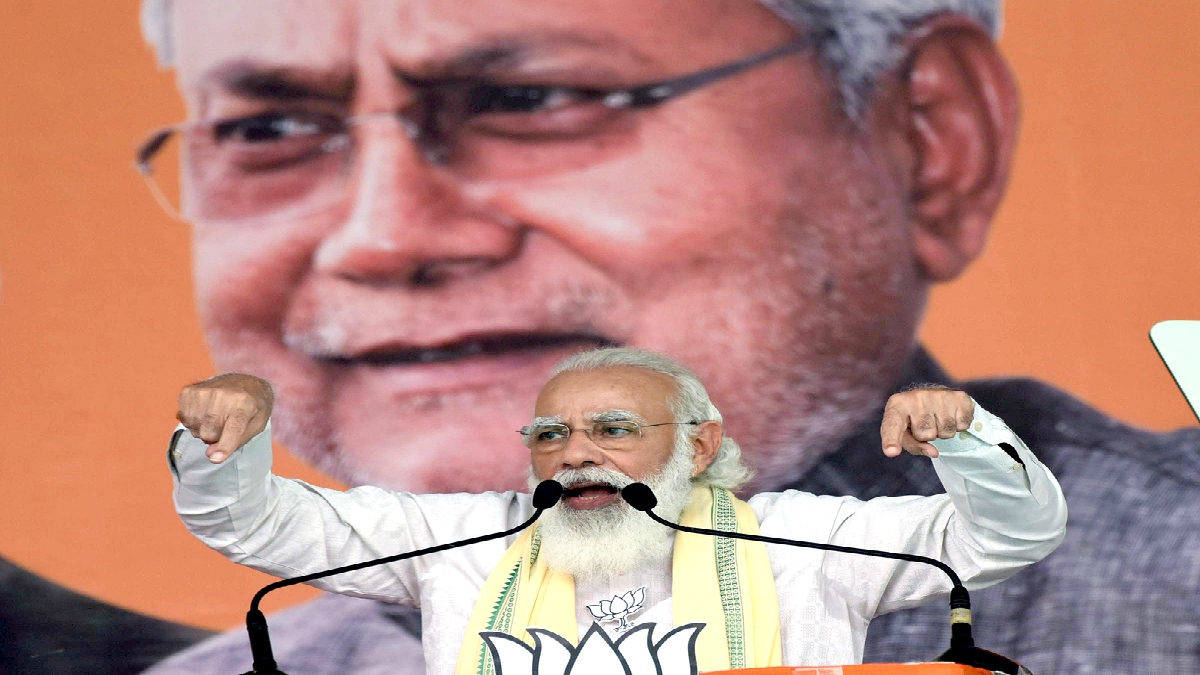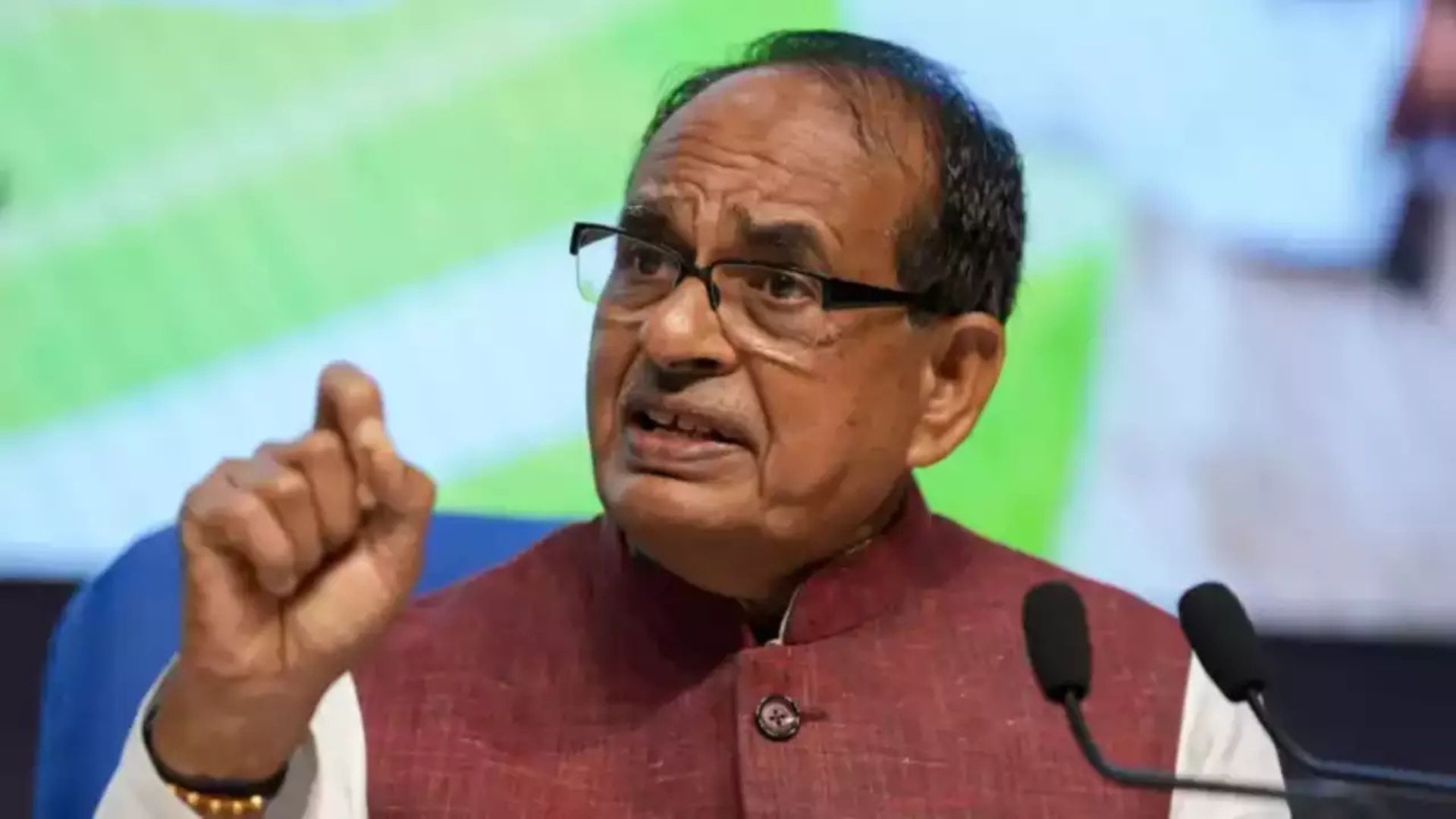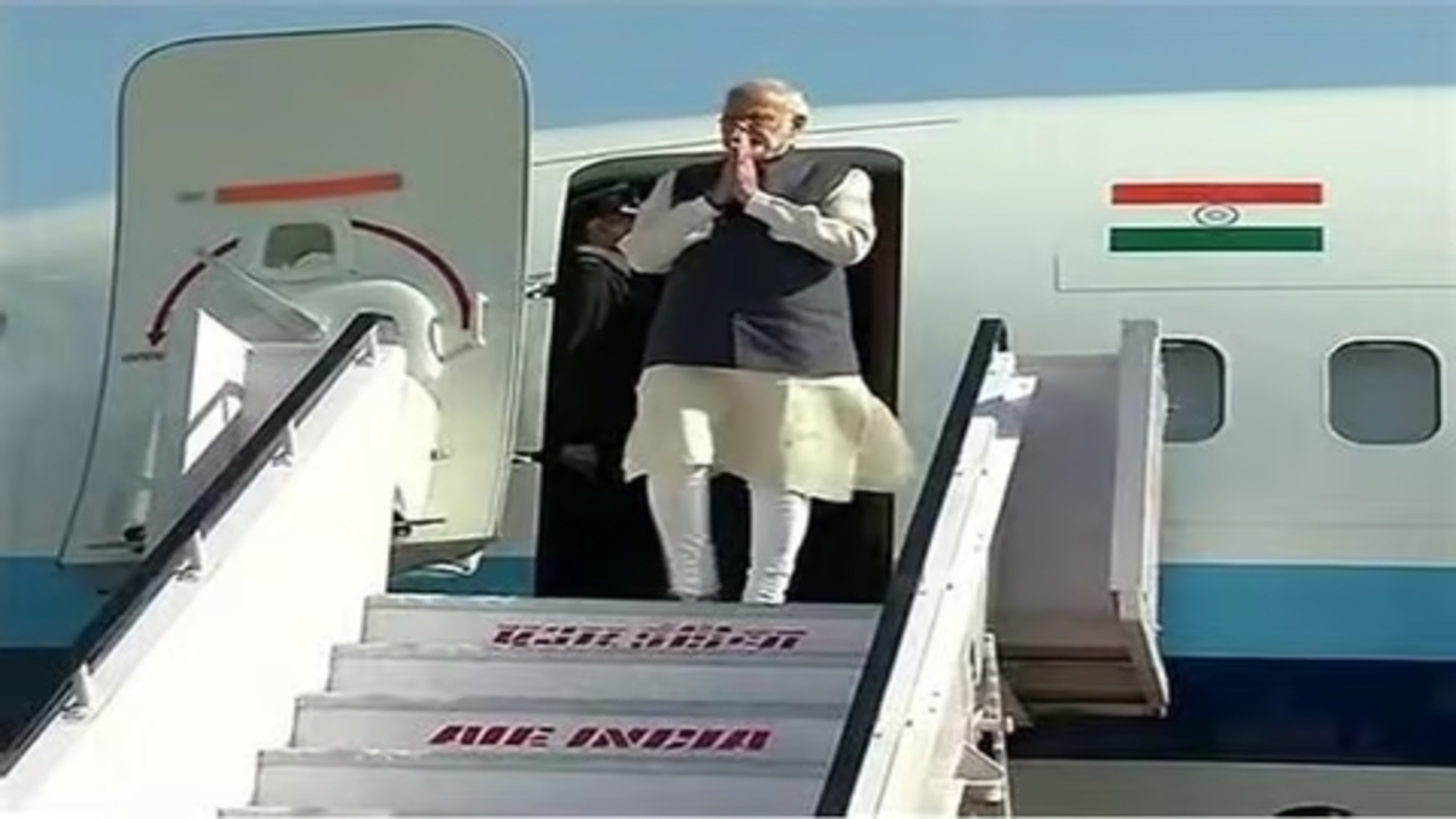
The Bharatiya Janata Party (BJP) released its manifesto for the Assembly elections in Bihar on 22 October 2020, with its first promise being the free distribution of the Covid-19 vaccine, once it is approved by the Indian Council of Medical Research (ICMR). The announcement led to a storm of criticism against the BJP by an intellectually and morally bankrupt Opposition. Clearly, like many immunisation programmes, the Centre will provide vaccines to all states at a nominal rate. It is then for respective state governments to decide if they want to give it for free or otherwise. Health is a state subject and the Bihar unit of the BJP has decided to give the vaccine for free. Hence, there is nothing wrong with what the BJP has promised. Interestingly, after opposing the BJP’s move, the Congress announced free Covid vaccines in Puducherry, showing blatant hypocrisy and duplicity.
In its ‘Sankalp Patra’, the BJP has promised 19 lakh jobs for the youth of Bihar and expressed its commitment to turn the state into an information technology hub, given India’s IT industry which is worth over $177 billion. Under the New Education Policy (NEP), engineering and other technical education would be made available in Hindi in the state. The manifesto has also promised the appointment of three lakh teachers in schools and higher education institutions within the next year and one lakh jobs in the health sector. The promise to construct 30 lakh pucca houses for the poor has also been made after stupendous success with constructing over 28 lakh houses for the poor in the last five years. Special emphasis will also be given to the establishment of 13 food processing parks, and a minimum support price will be put in place for pulses to help farmers in Bihar.
Besides these, digital counselling centres, the operationalisation of Darbhanga AIIMS by 2024, Rs 2 lakh ex-gratia for the kin of a migrant labourer who dies suddenly in another state, a job and Rs 25 lakh for the family of a soldier who lays down his life for the nation, a micro-financing scheme to make 1 lakh women independent, IT infrastructure in Patna and Rajgir, free tabs for meritorious students in Class 9 and above, a sports university, and 4G and broadband service in all towns and villages are the defining points of the BJP manifesto, with PM Narendra Modi’s decisive stamp of inclusivity all over it.
Moving away from the manifesto and looking at hard numbers, what stands out is the fact that at over Rs 7 lakh crore, Bihar’s Gross State Domestic Product (GSDP) has grown from being just 3.19% fifteen years back, under the aegis of the Rashtriya Janata Dal (RJD), to a solid 11.3% now, under the BJP-JD(U), with a consistent average growth of over 10% in the last three years. The per capita GSDP of Bihar is Rs 47,541 at current prices and Rs 33,629 at constant prices. The main growth drivers of the economy in Bihar, which registered a double-digit growth and contributed towards real growth of the overall economy of Bihar during 2018-19, are air transport (36%), other services (20%), trade and repair services (17.6%), road transport (14.0%), and, of course, financial services (13.8%).
The fiscal deficit of Bihar was 2.68% of the GSDP, revenue surplus 1.34% of GSDP, and the outstanding public debt liability of the state government was 32.34% of the GSDP during the year 2018-19. What the fiscal numbers indicate is that the BJP-JD(U) combine has managed state finances very consummately, without borrowing recklessly or engaging in high leverage, which many Opposition-ruled states are guilty of. The revenue receipt increased by 12.2% whereas revenue expenditure increased by 21.7%, with the revenue surplus being a healthy Rs 6,896 crores.
Agriculture and allied activities, which are the mainstay of Bihar’s economy, contributing to 23% of the GSDP, have done tremendously well in the last five years. The annual growth rate of operational agro-based factories in Bihar was 16.4 % over the last 10 years, higher than the 2.5% agri-growth under an inept and corrupt RJD in the pre-2005 era.
The per capita consumption of electricity in Bihar has risen from 145 kwh in 2012-13 to 311 kwh in 2018-19, implying growth of 114% in the last six years. Under the “jungle raj” of the RJD’s Lalu Prasad Yadav prior to 2005, just 22% of Bihar had access to electricity, but today, that number is 100%. Similarly, access to pucca roads has gone up from being at 34% fifteen years back to as high as 96% today. This is the biggest vindication of how PM Modi’s “Sabka Saath, Sabka Vikas and Sabka Vishwaas” initiative has touched the life of every common Bihari and, thereby, redefining the concept of inclusivity. The BJP-JD(U) alliance’s flagship programme of “Jal-Jeevan-Hariyali”, to tackle issues related to climate change and environmental degradation, has worked wonderfully well too.
In a big development in 2018-19, Bihar also made it mandatory for all departments to make their purchases through the GeM Portal. In the same period, the share of social services expenditure in total expenditure increased by a good 200 basis points. The BJP-JD(U) has been providing subsidies of 90% on drip irrigation and 75% on sprinkler irrigation, making farming cost effective, lucrative and less dependent on monsoons.
Interestingly, 75% of total migration took place due to marriage in the last few years, as compared to 46% at the all-India level in 2011, under a thoroughly incompetent Congress-led UPA regime, when migration happened due to the lack of career-related opportunities. Only 2.9% of the total migration from Bihar in the last six years took place due to work/employment and business, which busts the fake information that people from Bihar under the BJP-JD(U) alliance have been migrating due to lack of employment opportunities.
Bihar was also the sixth highest state in terms of building additional road length (1,30,799 km) during 2008-2017. It was also at the third position among major states of India in 2017 in terms of rail route per thousand sq km of area. Presently, the rural tele-density in Bihar is over 46 connections per 100 people, and urban tele-density is more than 149 connections per 100 people. With a share of 4.9% in 2019, Bihar is also in the top 10 in terms of the share of branches of commercial banks. There was an increase of 14.8 percentage points in the literacy rate of Bihar too, which has improved significantly from 47.0% under the corrupt RJD regime in 2001 to 61.8% in 2011. The expenditure on education in the state increased at an annual rate of 13.8%, while that on health registered an annual growth rate of 20.8%.
In recent years, the JEEVIKA scheme has received recognition at both national and international forums for its excellent achievements. The objective of this scheme is to provide sustainable income-generating assets to extremely poor households, including those who were traditionally involved in the production and sale of country liquor or toddy before the imposition of liquor prohibition in April 2016.
No discussion on Bihar is complete without elaborating on the “jungle raj” of the erstwhile RJD regime and the disgraced RJD leader, Lalu Prasad Yadav, who was convicted and sent to prison for the IRCTC scam. The CBI chargesheet included charges pertaining to criminal conspiracy (120-B), cheating (420) and other relevant sections of the IPC. It is reported that the tender process was rigged and manipulated and the conditions were tweaked to help the private party (Sujata Hotels). The IRCTC scam was limited just to Lalu but extended to a wide network of RJD members and close associates of Lalu, showcasing political greed and corruption at its worst. For this reason alone, it is unlikely that the politically conscious electorate of Bihar will ever vote the RJD back to power, given its dubious record, infighting between Lalu’s sons and a clueless Tejashwi Yadav who has no political acumen. How can a party (RJD) deliver corruption-free good governance when its patriarch is behind bars after being indicted by the law of the land?
PM Modi inaugurated two other major railway projects in Bihar in 2016, apart from the Munger rail project, in Patna and Mokama, over the river Ganga, with the total cost of these three aforesaid rail projects standing at over Rs 7,000 crore. Hence, those who falsely allege that BJP has been talking about development in Bihar only in 2020 with an eye on the Bihar polls are completely oblivious to facts. The hard truth is that good governance has been an ongoing mantra for the BJP-JD(U) combine. Last month, Modi dedicated the Kosi Rail Mega bridge to the nation and inaugurated projects such as a new railway bridge on the Kiul river, two new railway lines, five electrification projects, one electric locomotive shed at Barauni and a few others. As much as 90% of the rail network in Bihar has been electrified over the last six years and more than 3,000 km of the railways have been electrified. Work on the dedicated freight corridor (DFC) is going at a faster pace and about 250 km of the corridor will fall in Bihar. Of the 41 big river bridges in the state, 25 have been constructed during the NDA’s 15-year rule, while 16 were built between 1947 and 2005. The NDA government will take up the construction of another 21 bridges. Clearly, the NDA has worked at fever pitch for the welfare of Bihar, transforming it from a “Bimaru” to a vibrant state. More importantly, the rapid growth of Bihar is in many ways a vindication of the pervasiveness of Modinomics, Prime Minister Modi’s famed economic philosophy.
“Bharat’s heart is Bihar, Bharat’s respect and pride is Bihar, Bharat’s culture is Bihar. Bihar is the call for independence, the call for ‘sampoorna kranti’ (complete revolution). Aatmanirbhar Bharat’s flagship is Bihar. Whether it is for the security or development of the country, the people of Bihar always stay in front”—this powerful quote by PM Modi sums up the mood of the electorate and the relevance of Bihar in the national scheme of things.
The writer is an economist, national spokesperson of the BJP and the bestselling author of ‘Truth & Dare: The Modi Dynamic’.















